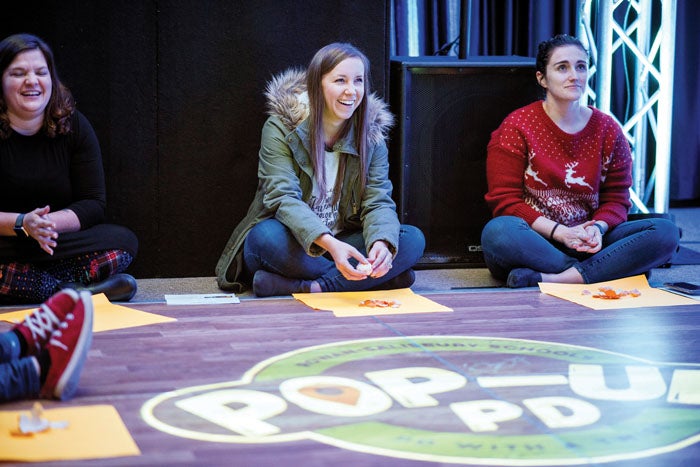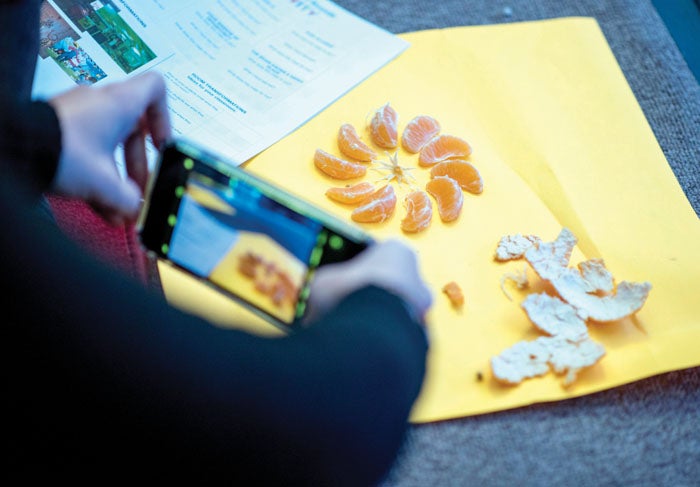Teachers assess ways to bring creativity into the classroom
Published 12:00 am Friday, December 6, 2019
FAITH — At Virtual Sounds, they go for the “wow” factor.
And on Thursday, the business let Rowan-Salisbury Schools teachers think about transforming their classrooms into an experience for their students.
In the first in the series of programs, educators participated in “Pop-Up P.D.” to learn about professional development in the community. At Virtual Sounds, teachers focused on creativity. At Koco Java, they focused on work ethic. At Hive, they looked into boosting collaboration. At Patterson Farms, they strategized about problem solving. And at Holy Grind, they looked at building civility.
Amie Caudle, an innovation coach at South Rowan High School, led the Virtual Sounds “Pop-Up P.D.” for about a dozen teachers from across the county.
Charlena Perrell, a fourth-grade teacher at West Rowan Elementary School, decided to think about ways to transform clasrooms when she moved from second to fourth grade. She has made her classroom into a cafe, a scene out of “Jurassic Park” and a winter wonderland.
For the cafe, she bought six plastic tablecloths, tea lights and vases with flowers. She said teachers can get caught up in spending money on a room transformation, but over the years she has learned some lessons, such as investing in quality items that can be used multiple times and reaching out in the community to get used decorations.
Perrell said after her local volunteer fire department had an underwater-themed father-daughter dance from which she got the second-hand decorations.
The educators on Thursday also took notes on what Virtual Sounds did to transform its spaces. Past the lobby area of the business is a room that has controlled lighting. A teacher thought out loud about installing a black light in her room.
“Think about how this relates to your classroom,” Caudle said. “When kids walk in through your door, what do they smell, what do they see, what are they feeling? When you walk through this, what are they sensing when they walk through your class?”
Errin Brown, the owner of Virtual Sounds, spoke about transforming spaces, like making Carson High School’s atrium into a scene from New York for the prom.
Brown and founder Dustin Jones began their hobby of deejaying and event planning when they were students at East Rowan High School and with the help of a teacher. They started with school dances their junior year and moved onto weddings as their friends got married. In 2011, what was once a hobby became their full-time jobs.
“We get to be creative all the time,” Brown said. “We go into a new place, and they want to make it look like something else.”
Caudle on Thursday talked about an interpersonal skills rubric and how teachers could score students on creativity at the elementary, middle and high school level.
Elementary students would have a self-reflection with emojis. They would evaluate their own ability to explore original solutions, have flexibility in transition and ask questions to demonstrate curiosity.
Caudle asked teachers what problems might arise when rating students on creativity.
“Our students don’t know how to be creative because they are used to saying, ‘I can make a poster,’ and they don’t think outside the box,” said Raven Cox, a Salisbury High School teacher.
Another educator chimed in to say students think teachers have the right answer in mind and they want to know how to get to that answer, which limits their creativity.
Caudle said creativity shouldn’t be limited to someone who can draw, play a musical instrument or sing.
“If you’re able to do something from a different approach and still reach an end, that’s creativity,” said Becky Glenn, assistant principal at South Rowan High School.
Caudle said the rubric allows teachers to provide feedback after they self-reflect.
At the middle school level, students look at their ability to pose a unique solution, be resourceful, use their imagination for original ideas, have flexible thinking and try new ideas. At the high school level, they evaluate their ability to use available resources for a specific purpose, positively express individuality, synthesize information, develop original ideas and apply individuality to positively contribute to the surroundings.
Caudle said the students aren’t used to being talked to about their ability to be creative.
The rubric, she said, is still in a draft stage but is likely to be rolled out to principals soon.
The next “Pop-Up P.D.” will be in February.









